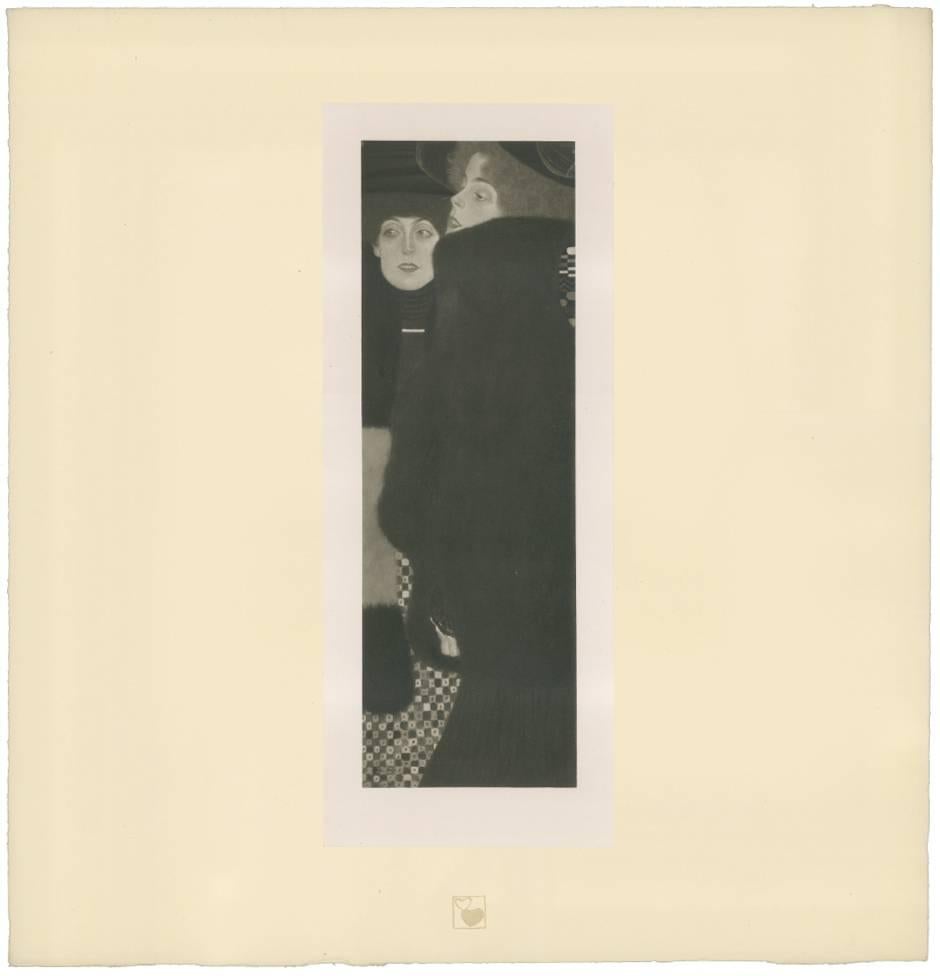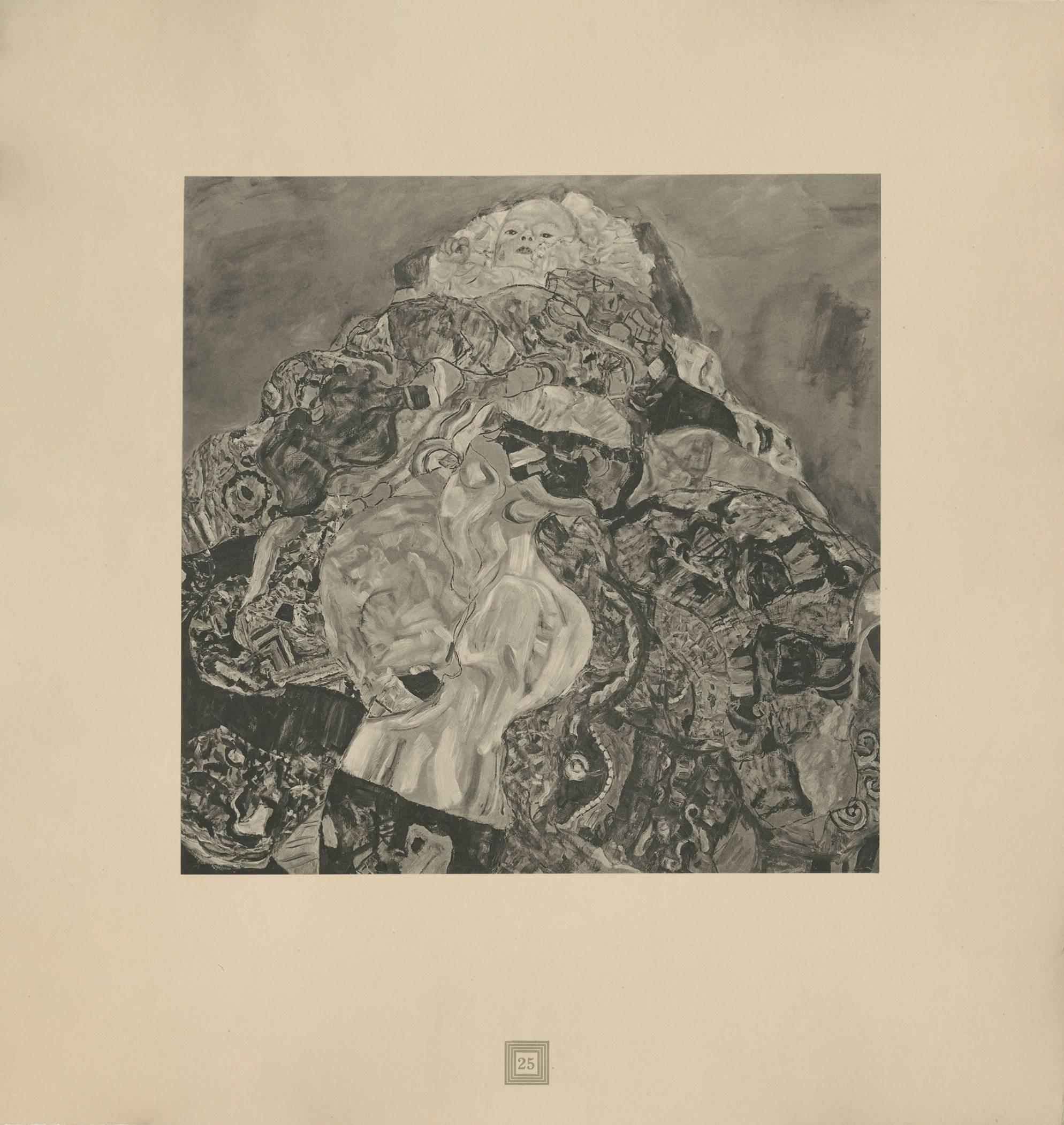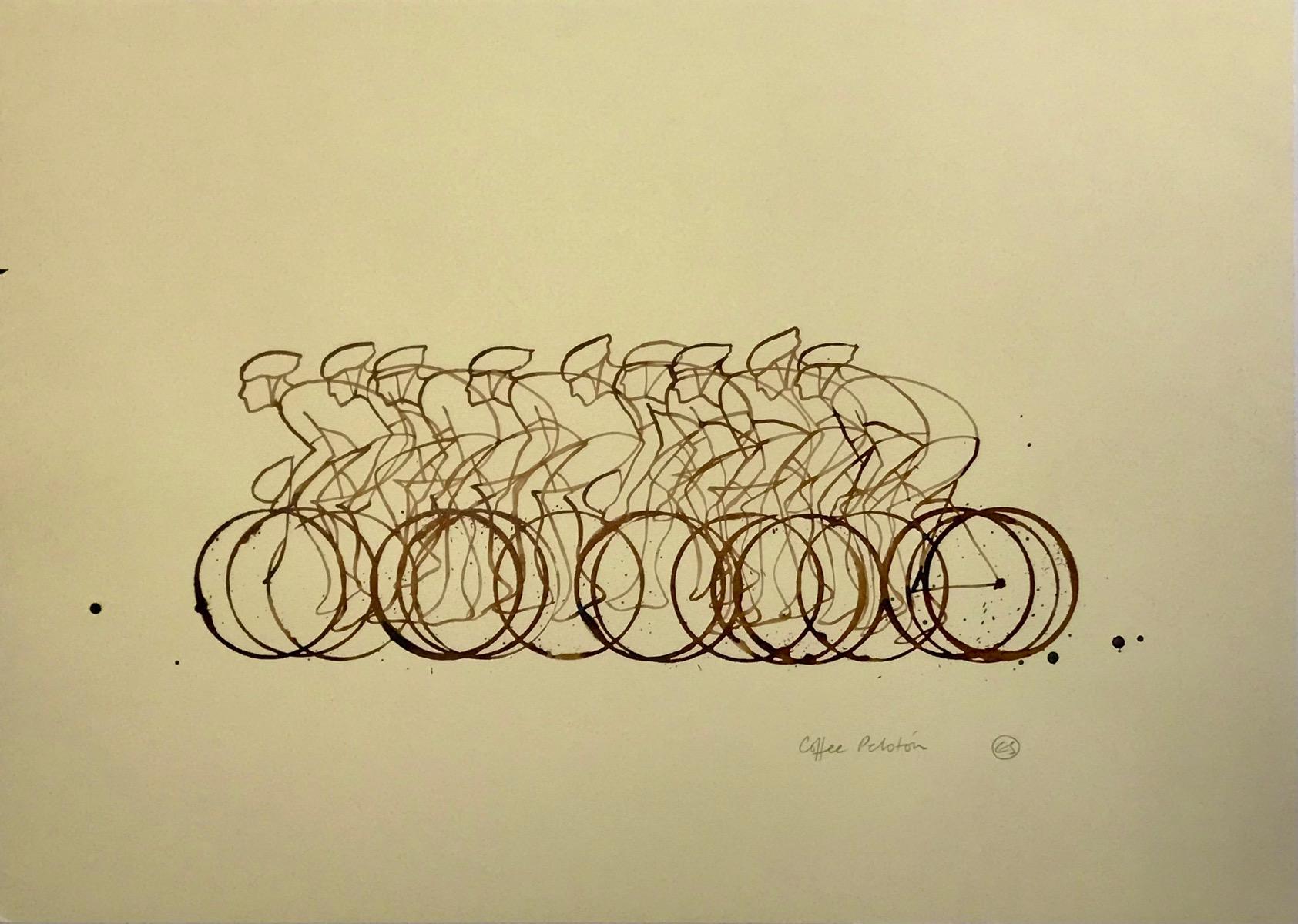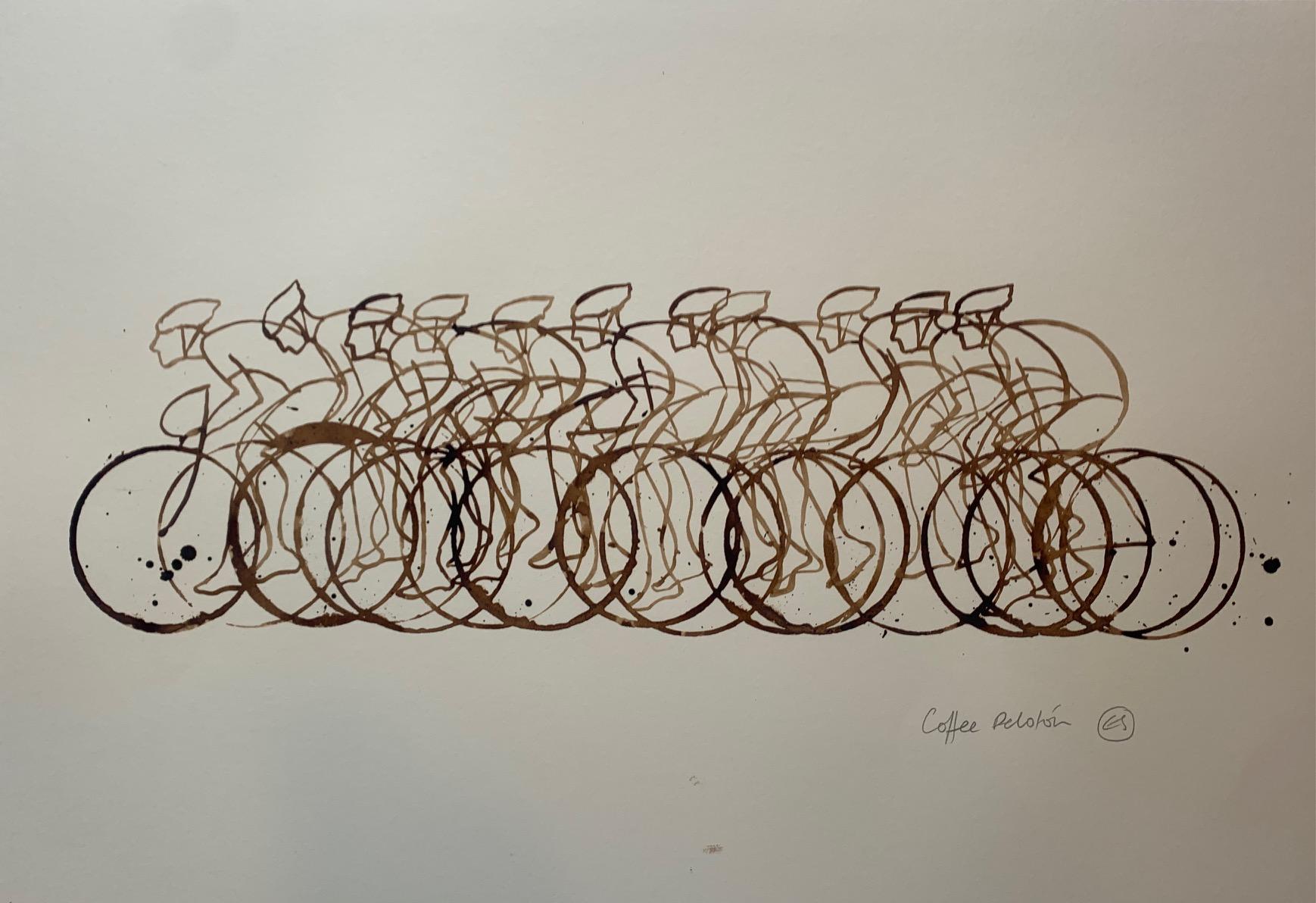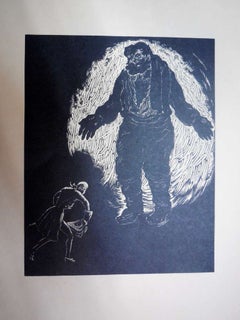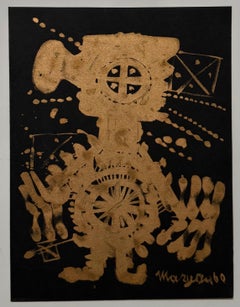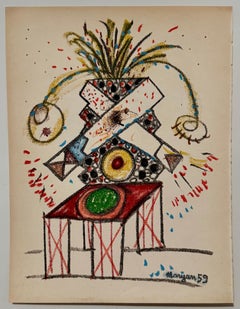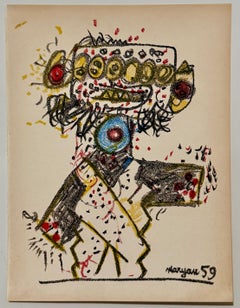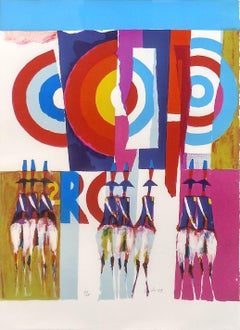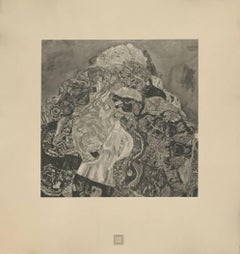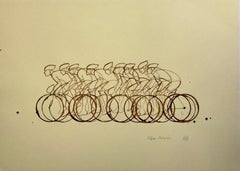Items Similar to Expressionist Windy Day Portrait
Want more images or videos?
Request additional images or videos from the seller
1 of 5
Arthur KolnikExpressionist Windy Day Portrait
About the Item
Arthur Kolnik was born in Stanislavov, a small town in Galicia, which was then part of the Austro-Hungarian Empire. His father, who was originally from Lithuania, worked as an accountant and his mother, who was originally from Vienna, ran a shop. In 1905, he discovered Yiddish literature in Czernowitz, on the occasion of the first conference on Yiddish language, which was organized by several writers including I. L. Peretz, Cholem Aleichem, Shalom Asch, and Nomberg.
In 1909, Kolnik joined the School of Fine Arts in Krakow and took classes taught by Jacek Malezcewski and Joseph Mehoffer, a portrait painter and an artist who produced stained-glass windows in Fribourg (Switzerland).
He was mobilized in the Austrian army in 1914. He was wounded in 1916 and repatriated to Vienna, where he met the Judaic painter Isidor Kaufmann. In 1919, Kolnik settled in Czernowitz, which was then annexed by Romania. There, he met writer and poet Itzik Manger and storyteller Eliezer Steinberg for whom he produced several illustrations. In 1920, Kolnik left for the United States, bringing fifty paintings with him, after he saw an advertisement in a Yiddish newspaper about an exhibition of Jewish Polish painters in New York. He found out that it was too late for his Judaica paintings to be exhibited in this exhibition, but he luckily met photographer Alfred Stieglitz who found him a gallery and organized an exhibition of his work.
In 1931, Kolnik arrived in Paris with his family. For several years, he gave up painting. His wife taught piano and he drew for fashion journals. In 1934, he produced an album of twenty-four engravings, Sous le chapeau haut de forme (Underneath the Top Hat), which was prefaced by Henri Barbusse. He later produced twelve plates for Grosbart’s Les Personnages (The Characters). In 1948, he illustrated I.L. Peretz’ Métamorphoses d’une mélodie (Metamorphosis of a Melody).
In 1940, he was interned at the Récébédou camp in Haute-Garonne with his wife and daughter.
Following the war, Arthur Kolnik stayed in London, New York, Krakow, Vienna, Riga, and Buenos Aires, where he exhibited his work. He contributed to the journal Nos Artistes (Our Artists). In 1955, in New York, he was awarded the Chaban prize for his graphic work. In 1962, his fist solo exhibition took place in Paris at the Galerie Creuze. That same year, he traveled to Israel for the first time.
- Creator:Arthur Kolnik (1890 - 1972, Polish, Ukrainian)
- Dimensions:Height: 14 in (35.56 cm)Width: 10.5 in (26.67 cm)
- Medium:
- Movement & Style:
- Period:
- Condition:
- Gallery Location:Surfside, FL
- Reference Number:1stDibs: LU38210500722
About the Seller
4.9
Platinum Seller
Premium sellers with a 4.7+ rating and 24-hour response times
Established in 1995
1stDibs seller since 2014
1,743 sales on 1stDibs
Typical response time: 2 hours
- ShippingRetrieving quote...Shipping from: Surfside, FL
- Return Policy
Authenticity Guarantee
In the unlikely event there’s an issue with an item’s authenticity, contact us within 1 year for a full refund. DetailsMoney-Back Guarantee
If your item is not as described, is damaged in transit, or does not arrive, contact us within 7 days for a full refund. Details24-Hour Cancellation
You have a 24-hour grace period in which to reconsider your purchase, with no questions asked.Vetted Professional Sellers
Our world-class sellers must adhere to strict standards for service and quality, maintaining the integrity of our listings.Price-Match Guarantee
If you find that a seller listed the same item for a lower price elsewhere, we’ll match it.Trusted Global Delivery
Our best-in-class carrier network provides specialized shipping options worldwide, including custom delivery.More From This Seller
View AllShtetl Scene Expressionist woodcut
By Arthur Kolnik
Located in Surfside, FL
Arthur Kolnik was born in Stanislavov, a small town in Galicia, which was then part of the Austro-Hungarian Empire. His father, who was originally from Lithuania, worked as an accoun...
Category
1930s Expressionist Figurative Prints
Materials
Paper
Polish French Figurative Abstract Art Brut Expressionist Lithograph Maryan
By Pinchas Maryan
Located in Surfside, FL
Pinchas Burstein, known as Maryan
Lithograph (after the drawing).
1960
Dimensions: 12 3/8 x 9 3/8 inches (315 x 240mm).
Gold or bronze ink on black paper
Signed in the plate, not b...
Category
1960s Expressionist Figurative Prints
Materials
Paper, Lithograph
Polish French Figurative Abstract Art Brut Expressionist Lithograph Maryan
By Pinchas Maryan
Located in Surfside, FL
Pinchas Burstein, known as Maryan
Lithograph (after the drawing).
1960
Dimensions: 12 3/8 x 9 3/8 inches (315 x 240mm).
There is printed text on the back, as issued.
Signed in the...
Category
1960s Expressionist Figurative Prints
Materials
Paper, Lithograph
Polish French Figurative Abstract Art Brut Expressionist Lithograph Maryan
By Pinchas Maryan
Located in Surfside, FL
Pinchas Burstein, known as Maryan
Lithograph (after the drawing).
1960
Dimensions: 12 3/8 x 9 3/8 inches (315 x 240mm).
There is printed text on the back, as issued.
Signed in the...
Category
1960s Expressionist Figurative Prints
Materials
Paper, Lithograph
Apeles Fenosa Spanish Sculptor Mourlot Lithograph Abstract Expressionist Figures
By Apelles Fenosa
Located in Surfside, FL
This is from a hand signed, limited edition (edition of 125) folio or full page lithographs some having a poem verso. The individual sheets are not signed or numbered. This listing is just for the one sheet, not for the cover sheet or the signed sheet.
This was printed at Mourlot in Paris, France, on velin D'Arches paper.
Apel les Fenosa i Florensa (1899 - 1989) lived in Spain. Apelles Fenosa is known for Expressionist Sculpture.
Artist's alternative names: Apel·les Fenosa, Apelles Fenosa
Spanish...
Category
1970s Expressionist Figurative Prints
Materials
Lithograph
Apeles Fenosa Spanish Sculptor Mourlot Lithograph Abstract Expressionist Figures
By Apelles Fenosa
Located in Surfside, FL
This is from a hand signed, limited edition (edition of 125) folio or full page lithographs some having a poem verso. The individual sheets are not signed or numbered. This listing is just for the one sheet, not for the cover sheet or the signed sheet.
This was printed at Mourlot in Paris, France, on velin D'Arches paper.
Apel les Fenosa i Florensa (1899 - 1989) lived in Spain. Apelles Fenosa is known for Expressionist Sculpture.
Artist's alternative names: Apel·les Fenosa, Apelles Fenosa
Spanish Sculptor Fenosa was born in Barcelona, Spain in 1899 and as a young man worked in the studio of sculptor Enrique Casanovas where he came into contact with the ideas and adherents of the Modernist Movement and its influence in Barcelona, Paris and other European cities. In 1917 he founded together with Joan Rebull, Josep Granyer and Josep Viladomat the group The Evolutionists. He arrived in Paris in 1921. There he quickly gravitated into the Parisian avant garde artist community and became friends with Pablo Picasso, who became an early patron of his work, buying a significant number of his sculptures, and with the sculptor Max Jacob. By 1924 Fenosa was exhibiting in Paris and in his native city of Barcelona. Max Jacob wrote the preface to the catalogs of Fenosa's first Paris exhibition, and his show at the Zborowski gallery in 1928. In 1931 Fenosa was in Catalonia when the Second Spanish Republic was declared. There he remained in order to work with the anarchist movement and participate in the Republican ranks during the Spanish Civil War. He participated in the Venice Biennale in 1936 and with the coming to power of the Franco Fascist regime left Spain once again to settle in Paris. In 1942, he met the painter and poet, Paul Eluard, who became a close friend.
In 1944, the Comite de Liberation du Limousin (Organization for the Liberation of the Limousin) commissions a sculpture to commemorate the Nazi killings of Oradour-sur-Glane. He creates the "Monument aux Martyrs d'Oradour-sur-Glane" (Monument to the Martyrs of Oradour) presently in Limoges.
From 1946 Fenosa exhibited individually or collectively in Paris, London, Barcelona, Madrid, Prague, New York, Tokyo, Rabat, Osaka, Casablanca, Carrara.
His personal exhibition catalogs are prefaced by the most famous writers and poets of his time, including Paul Eluard, Jean Cocteau, Jules Supervielle, Josep Carner, Alexandre Cirici-Pellicer, Francis Ponge, Pablo Neruda, Michel Cournot, Roger Caillois, Salvador Espriu. He was part of a generation of Spanish and Catalan artists that included Jose Amat Pages, Ramon Pichot, Alfredo Opisso Cardona, Ramon Aguilar More, Juan Cardona Llados, Josep Miquel Serrano, Ignacio Zuloaga Y Zabaleta, Andre Beaudin, Francisco Domingo Y Segura, Jose Armet Y Portanel, Jose Ventosa Domenech, Antonio Vila Arrufat, Montserrat Gudiol Corominas, Juan Abello Prat, Francesc Artigau.
In 1981, the UNESCO commissions a bronze sculpture given every year to the laureate of the Unesco Prize for Peace Education. Fenosa creates L'Olivier, the "Olive Tree", symbol of peace and attribute of the poet. In 1982, he receives the Gold Medal of the Government of Catalonia, in 1983 the Legion d'Honneur ( French Legion of Honour) and in 1987 the Gold Medal of Barcelona.
He is commissioned to make a bronze sculpture award for the Joan Crexells Narrative Prize, the premier Catalan language literary prize awarded by the Ateneo Barcelonés to the best narrative work in Catalan published during the previous year.
Selected Solo Exhibitions
2021 Apel·Les Fenosa ,Galeria Marc Domenech ,Barcelona, Spain
Selected Group Exhibitions
2022 Figurative Expressionism ,Galeria Marc Domenech ,Barcelona, Spain (with Josep Guinovart and Jean Dubuffet)
2021 The point of sculpture ,Fundació Joan Miro ,Barcelona, Spain
2019 Picasso and the Exodus. A history of Spanish art in resistance, Les Abattoirs ,Toulouse, France (with Oscar Dominguez, Antoni Clavé, Josep Renau...
Category
1970s Expressionist Figurative Prints
Materials
Lithograph
You May Also Like
H.O. Miethke Das Werk folio "The Sisters" collotype print
By Gustav Klimt & K.K. Hof-und Staatsdruckerei
Located in Chicago, IL
DAS WERK GUSTAV KLIMTS, a portfolio of 50 prints, ten of which are multicolor collotypes on chine colle paper laid down on hand-made heavy cream wove paper with deckled edges; under each of the 50 prints is a gold signet intaglio printed on the cream paper each of which Klimt designed for the publication as unique and relating to its corresponding image; H.O. Miethke, Editor-Publisher; k.k. Hof-und Staatsdruckerei, Printer; printed in a limited edition of 300 numbered plus several presentation copies; Vienna, 1908-1914.
The idea of collaboration in the arts is anything but new; however it has so often been viewed and assessed as somehow devaluing the intrinsic worth of art. It’s as if it was a dirty secret to be hidden away. More so even than the eroticism explored by Klimt, which divided public opinion, the artistic avant-garde began to boldly flaunt artistic collaboration beginning in the 19th century- which gained steam in the first part of the 20th century- to become a driving vehicle of contemporary artistic creation. Viewed in this context, the folios of collotype prints published by H.O. Miethke in Vienna between 1908-1914 known as Das Werk Gustav Klimts, are important art documents worthy of as much consideration for their bold stand they take on established ways of thinking about artistic collaboration as they are for their breathtakingly striking images.
1908 is indeed a watershed moment in the history of art. To coincide with the 60th anniversary of the reign of Emperor Franz Joseph I, Kunstschau opened in Vienna in May of that year. It was there that Klimt delivered the inaugural speech. Speaking about the avant-garde group’s unifying philosophy of Gesamtkunstwerk, or the synthesis of the arts, Klimt shared his belief that the ideal means to bring artists and an audience together was via “work on major art projects.” It was at Kunstschau 1908 that Klimt first exhibited his most iconic painting, The Kiss, as well as The Sunflower, Water Snakes I and II and Danae. It was at Kunstschau 1908 that Das Werk Gustav Klimts was first available for purchase. Thanks to Galerie Miethke’s organization, Kunstschau 1908 was possible. Miethke’s pioneering art house had become Klimt’s exclusive art dealer and main promoter of his modernist vision. Paul Bacher and Carl Moll, a founding member with Klimt of the Vienna Secession, who all broke away during the rift in 1905, took stewardship of the gallery following the fallout with the Secession. Das Werk Gustav Klimts is a prime example of Miethke’s masterful and revolutionary approach to marketing art. Miethke’s innovative marketing strategy played to a penchant for exclusivity. The art gallery and publishing house utilized the press and art critics- such as Austria’s preeminent Art Historian, Hugo Haberfield, who became Director of the gallery in 1912- as a means of gaining publicity as well as maintaining effective public relations. Miethke used the grand exposition format to extend the art gallery’s market reach, cultivating their product’s prestige by stroking the egos of current art patrons while simultaneously creating accessibility for newcomers and others avid collectors to share a relative proximity to other wealthy and respected members of the art collecting community. Essentially, their approach paved the way for what is still the predominant means of marketing.
Between 1908 and 1914, H.O. Miethke published a total of 5 installments of print folios of Klimt’s painted work, each comprising 10 prints. The series was limited in availability to 300 and purchase was arranged through subscription. Each issue was presented unbound in a gold embossed black paper folder. Included in the folio was a Title Page, a Justification page and a Table of Contents page itemizing each of the 10 printed works with details about their corresponding painted works as well as information about each work’s current owner. These folios were not comprehensive of Klimt’s work; but rather, they feature what he believed were his most important paintings from 1898-1913. Only 2 collotypes in each folio were multicolored.
To punctuate the fact that Klimt, himself, was very much an active player in creating these printed works, he created square-shaped signets, unique to each collotype which were intaglio printed in gold ink at the bottom of the cream wove papers to which the chine collie papers were affixed.These signets relate thematically to their corresponding printed images and designate each of those images by their placement in the folio’s Table...
Category
Early 1900s Vienna Secession Figurative Prints
Materials
Archival Paper
CARABINIERI A OSTIA
By Nicola Simbari
Located in Aventura, FL
Serigraph on paper. Hand signed and numbered by the artist. Frame size approx 32 x 24 in. Artwork is in excellent condition. Edition of 125. Certificate of authenticity included. Al...
Category
1990s Expressionist Abstract Prints
Materials
Paper, Screen
$900 Sale Price
25% Off
Max Eisler Eine Nachlese folio "Baby" collotype
By (after) Gustav Klimt
Located in Chicago, IL
After Gustav Klimt, Max Eisler Plate #25, Baby; black & white collotype after the 1917 painting in oil on canvas.
GUSTAV KLIMT EINE NACHLESE (GUSTAV KLIMT ...
Category
1930s Vienna Secession Figurative Prints
Materials
Paper
Coffee Peloton (cp07_Nov23)
By Eliza Southwood
Located in Deddington, GB
Original Artwork by Eliza Southwood made from specially treated coffee and then submitted to a further setting treatment.
Additional information:
Eliza Southwood
Coffee on paper
So...
Category
2010s Expressionist Figurative Prints
Materials
Paper, Coffee
Coffee Peloton Series IX, Coffee On Paper, Cyclists, Sports Art
By Eliza Southwood
Located in Deddington, GB
Original Artwork made from specially treated coffee and then submitted to a further setting treatment so the artwork will last.
Coffee Peloton Series IX is part of an ongoing series ...
Category
2010s Expressionist Figurative Prints
Materials
Paper, Coffee
Small Coffee Peloton (CP_Small_01), Coffee On Paper, Cyclists, Sports Art
By Eliza Southwood
Located in Deddington, GB
Original A4 sized Artwork made from specially treated coffee and then submitted to a further setting treatment so the artwork will last
Image size:
Height: 21cm (8.27 in)
Width: 2...
Category
2010s Expressionist Figurative Prints
Materials
Paper, Coffee
Recently Viewed
View AllMore Ways To Browse
Ran Polish
Vintage Glass Top Hat
Austrian Piano
Alberto Giacometti On Sale
Alex Katz Bicycle
Alex Katz Wedding Dress
Alexander Calder Postcard
Alphonse Mucha Incantation
Alvin H Schwartz
Andr� Dignimont On Sale
Andy Warhol Lifesavers
Angel Bracho
Ann Michalov
Apostle Pitcher
Appearance Of Pluto
Arnoldo Ciarrocchi On Sale
Art Et Solidarite
Asa Chaffetz
